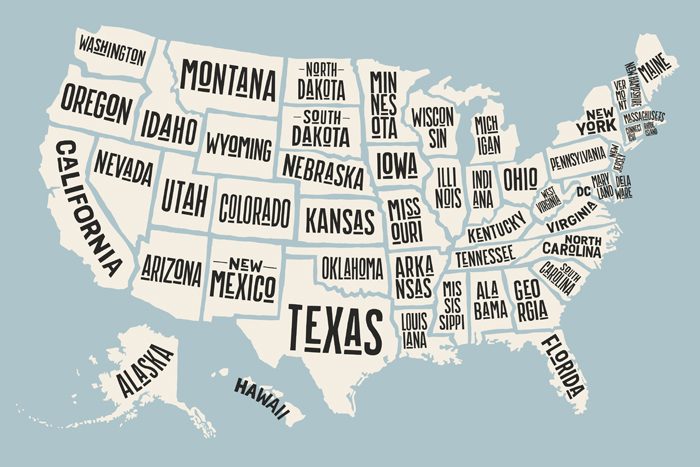Workers’ Comp and Paid Leave Legislative Updates in the Northeast

Workers’ compensation laws are ever-changing, making it a headache for insurers to keep up with all of the new legislation. Given that many employers are national, or operate in other states, they often have to keep track of changes to laws around the country.
A recent webinar from the Disability Management Employer Coalition (DMEC) dove into all the legislative actions regarding workers’ compensation and paid leave in the Northeast that employers need to know about.
In Workers’ Comp
1) Maine’s Legislative Document 756
Effective January 1, 2020
It’s been a busy year for Maine in terms of introducing workers’ compensation legislation. The state introduced 27 different bills that affect workers’ compensation at the beginning of the session.
Many of those bills were combined into legislative document 776, “An Act to Improve Workers’ Compensation,” which is expected to increase claims costs for employers.
“Some of the changes enacted will probably increase claim costs in Maine,” said Desiree Tolbert-Render, assistant vice president, national technical compliance and workers’ compensation at Sedgwick.
Among the provisions that will likely lead to the increase in costs is the increase in maximum benefits levels which are now 125% of the state’s average weekly wage.
Death benefits have also been expanded to parents of an employee who has no dependents and the duration of benefits for employees whose injuries leave them partially incapacitated has extended from 520 weeks to 624 weeks.
Some provisions legislative document 776 seek to improve the way claims are handled in the state.
“For years if you handled claims in Maine, you were taught that if you didn’t pay or deny that claim within 14 days terrible things would happen,” Tolbert-Render said. “Now, there are exceptions to the penalty rule.”
Those exceptions include unforeseen and unavoidable circumstances and employers have a 45 day window to pay a claim and then deny it after investigations.
2) New York’s Assembly Bill 02005/Senate Bill 01505
New York continued with their pattern of making changes to their workers’ compensation laws within the Governor’s budget bill.
Following the trend of allowing a greater variety of treatment options in workers’ compensation, New York’s state laws have expanded to cover treatment by an authorized physical therapist, acupuncturist or occupational therapist upon the prescription or referral of an authorized physician, physician’s assistant or nurse practitioner.
Allowing different types of providers to treat workers’ compensation patients should increase the number of medical professionals available to care for patients, however.
“In some parts of the state it’s difficult to get treatment because of a lack of doctor’s who are authorized by the [New York Workers’ Compensation] Board to treat workers’ comp,” Tolbert-Render said.
“Hopefully this will improve the timeliness of medical care for injured workers in that state.”
In addition to the changes to the types of authorized providers, the law also prohibits employers, carriers, or third party administrators from preventing injured employees from choosing their own providers and it allows the Board to impose a $50 fee per violation on any employer, carrier or TPA that fails to meet performance standards.
3) New Hampshire’s House Bill 406
Effective: July 14, 2019
New Hampshire’s House Bill 406 made changes to the process by which serious injuries and deaths in the workplace are to be reported and investigated.
Among those changes are a new requirement that deaths must be reported to the Department of Labor within eight hours and serious injuries, which it defined as an incident that results in an amputation, loss or fracture of any body part or a head or internal injury, must be reported within 24 hours.
The law also sets inspection requirements for public entities following a serious injury or death and it sets rules for how the Department of Labor will investigate serious injuries or deaths.
The bill does not absolve employers from OSHA reporting, rather companies must also report serious injuries and deaths to the state as well.
4) Connecticut’s House Bill 6916
This bill created a task force that will identify and study methods to expand and clarify the law regarding unreasonably contested or delayed workers’ compensation claims.
In an earlier version of the bill, the state planned to allow lawsuits for unreasonably contested or delayed claims, but many people within the industry fought to kill and the provision was removed in favor of creating the task force.
The task force will provide a report to the Labor Committee by January 1, 2020.
In Paid Leave
1) Connecticut Paid Family Leave Act
Effective: January 1, 2022
The Connecticut Paid Family Medical Leave Act (PFML) is an amendment to the state’s unpaid family medical leave act that requires employers with at least one employee to provide each of their employees with up to 12 weeks of paid medical leave, family leave or military caregiver leave within a 12 month period.
For military caregiver leave, employees may still take 26 weeks of leave, but only 12 of them will be paid.
Like other paid family and medical leave laws that have passed recently, the law includes an earnings provision to determine employee eligibility. Under Connecticut’s law all employees in the state who have earned at least $2,325 during the highest earning quarter.
Employers can opt-out of the state plan and develop their own private plans if the majority of their employees approve.
One of the primary changes this law will make is expanding the definition of what is a family member.
“They’ve added the kind of catch all which is anybody related by blood or affinity,” said Daris Freeman, assistant vice president and legal counsel at Unum.
2) New York Paid Family Leave
Effective: January 1, 2020
Not much has changed in New York in the last year, but since it’s a tiered program there will be some changes come January 2020.
These include an increase in the weekly benefit rate from 55% of an employee’s weekly earnings to 60%, an increase in the state average weekly wage from $1,357.11 to $1401.17 and an increase in the maximum benefits from $746.41 to $840.70.
3) New Jersey Family Leave Insurance
Effective: February 2019 and July 2020
An amendment to the state’s paid family leave insurance laws and their unpaid leave laws. Similar to the Connecticut PFML Act, this amendment expands the definition of covered family members to include “anyone who’s close association is the equivalent of a family relationship,” Freeman said.
“Kind of anyone can be a family member in New Jersey now under the FLI for caring for a family member,” she added.
The amendment also expanded leave reasons to include foster care placements and absences under the New Jersey SAFE Act for victims of domestic and sexual abuse. Employees who take absences for these reasons may now be eligible for paid leave benefits.
Job protection provisions were also added. Employees are now eligible for paid leave absences earlier than unpaid leave absence and employers now have some reinstatement requirements if an employee takes paid leave.
Additionally, employers can no longer require employees to use up to two weeks of available vacation before using FLI benefits.
In July 2020, additional provisions from the amendment will take effect, including an increase in the amount of available leave from 6 weeks to 12 weeks during a 12 month period, an increase in the weekly benefits to 85% of an employee’s wage and an increase in the maximum weekly benefits from $650 to $881.
4) Massachusetts Paid Family Medical Leave
Effective: In progress
Massachusetts is currently about half way through the implementation of its Paid Family Medical Leave laws and regulations have been finalized.
Employees who have earned at least $4,700 and thirty times the unemployment insurance benefits in the last four quarters are eligible for coverage. Former employees are covered within 26 weeks of leaving the company.
Some independent contractors are eligible as well. As a general guideline, independent contractors are covered if an employer’s workforce is made up of more than 50% independent contractors.
All employers are covered under the state plan, but they may choose a private plan that is approved by the state.
Under the law, employees would be eligible for 26 weeks combined medical, family and military caregiver leave. Family leave is capped at 12 weeks; medical leave 20 weeks; and military caregiver leave 26 weeks.
Employees receive 80% of their wages up to 50% of the state’s average weekly wage. After that, they receive 50% of their wages above that amount with a cap of $850 in maximum weekly benefits.
Trends to Watch
During the webinar Don Lipsy, director of networks at Sedgwick, identified three trends workers’ compensation professionals need to be on top of.
1) PTSD and Behavioral Health: Both Connecticut and New Hampshire passed bills that allow PTSD to be a stand-alone claim for first responders. Lipsy said that this trend has been seen over the past few years and he expects to see it expand to other intense professions, such as nursing.
2) Prescription Drugs: State drug formularies are becoming increasingly common as officials try to battle the opioid epidemic. New York’s formularily was highlighted by Lipsy for it’s three-tiered authorization system which he said could become the standard bearer for other states.
Other states, like Pennsylvania, are also debating adding a prescription drug formulary for workers’ compensation. Formularies are currently active in 13 states and are being debated in seven other states in 2020.
3) Medical Marijuana: It’s unsurprising that medical marijuana was identified as a trending topic in workers’ compensation legislation. Inconsistent federal and state regulations have made use of the drug a hot topic in many states.
Lipsy noted that five different states — Maine, New York, Maryland, New Jersey and Vermont — have all considered legislation that would authorize the reimbursement of medical marijuana in workers’ compensation. &

Click here for updates in the West, South or Midwest.










